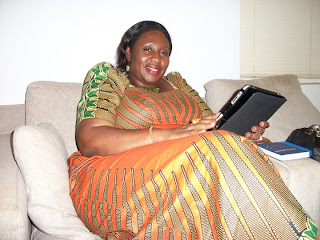Fw: Nairobi Star: U.S. HIV/Aids Funding Agency May Force Nation to Mainstream Gay, Lesbian Rights
U.S. HIV/Aids Funding Agency May Force Nation to Mainstream Gay, Lesbian Rights
Henry Neondo
May 25, 2011
Nairobi Star
New funding policy guidelines issued on Saturday by the US President's Emergency Plan for AIDS Relief (PEPFAR) could force countries like Kenya who are strongly opposed to men having sex with men to backtrack.
On Saturday in the US, PEPFAR, a major contributor of funds to fight HIV/Aids in 15 countries in sub-Saharan Africa (Kenya is the leading recipient of its funding at $510 million - Sh43.4 billion - every year) released a new Technical Guidance on Combination HIV Prevention for men who have sex with men (MSM) designed to be used by Country Missions. The guidelines call measures to be put in place to address human rights, legal barriers and homophobia in HIV response for MSM.
The PEPFAR MSM guidance comes at a time when MSM in low and middle-income countries are on average 19 times more likely to be infected with HIV than the general population.
Although MSM are considered by the National AIDS Control Councils or Commissions of such countries as Kenya, Uganda, Tanzania and Zimbabwe to be a "most at-risk population", but because homosexual acts are illegal, there are no policies or services targeting HIV interventions towards them.
Dr Peter Cherutich, Head HIV Prevention at the National AIDS and Sexually Transmitted Infections Control Programme (NASCOP) told a gathering at the First Biennial Conference on HIV held in Nairobi last week that "MSM still remains a taboo subject in Kenya".
The hurdles they face emanate both from the state and general citizenry. In February last year, mobs in Mtwapa, Mombasa, attacked men they suspected of being gay. The Gay and Lesbian Community in Kenya (GLCK) have been trying without success to remove bottlenecks they face.
According to David Kuria, the spokesperson of the Gay and Lesbian Community in Kenya, over 33% of all new infections in the country are attributable to these sub-populations.
In recent times, he adds, further evidence has emerged that corroborates what the GLCK had been insisting for a long time - that effective HIV programming for these populations has additional positive impact on the general population.
The GLCK spokesperson says that MSM who seek ARVs are constantly arrested, detained and as a consequence have their treatment interrupted.
This was closely followed by threats from the religious leaders who threatened the HIV clinic in Mtwapa, because the clerics wanted gay men excluded from its services.
This not only decreases the efficacy of their treatment but also raises HIV drug resistant strains in the Kenyan society - again because of the interface between the MSM and the general population, these drug resistant strains spread not just among the MSM but also the entire population. In other words it is not possible to talk of adherence to HIV treatment, when MSM can routinely be arrested and removed from treatment because of the existing legal environment.
"Ignoring effective programming for these populations is an exercise in futility if the desired goal is a HIV free society. Moreover effective programming for these sub-populations increases the efficiency in the use of resources, because, a dollar spent on these population has flow-over effect to the general population," he said.
In Uganda recently, a Member of Parliament had advocated for a Bill that wanted to make practising of gay or lesbianism a capital offence. AIDS activists say the bill would not only have driven an already stigmatised population further underground but would have left them even more vulnerable to HIV. The Bill was, however, withdrawn days to President Yoweri Museveni's recent swearing-in for a fifth term in office.
For many gay people in Kenya thanks to the prevailing stereotype that links homosexuality closely with tourism, there is a veritable confusion between sexual orientation and transactional sex since transactional sex is perceived to be the only avenue for personal sexual expression.
For HIV programming, this requires more than a passing glance because gay Kenyans often get caught up in transactional sex, on assumption that such is the only way they can actualise their sexuality.
Dr Cherutich says because of stigma associated with this sexual orientation, over 60% of all MSM hide in heterosexual relationships while at the same practice their preferred sexual orientation.
This factor alone could be the reason why there is high prevalence rate among married couples ----at 46% according to the latest AIDS indicator surveys---than any other groups in Kenya.
With a budget of $48 billion (Sh4 trillion) over five years to support programming for HIV, tuberculosis and malaria in low- and middle-income countries, PEPFAR offers an enormously powerful tool to address this worsening global crisis. "We are very happy to see that OGAC has finally issued a guidance document for MSM," said Dr George Ayala, Executive Officer of the Global Forum on MSM & HIV (MSMGF) in reaction to the news from PEPFAR.
Ayala said the MSMGF is encouraged by the news from the Office of the US Global AIDS Coordinator (OGAC), saying that the forum has advocated for the development of technical guidance since 2009, taking a delegation of MSMGF Steering Committee members from Africa to Washington to discuss the necessity of technical guidance as recently as last Tuesday. "With the guidance now available, we will be looking closely at its implementation and how MSM prevention programmes are funded."
Released early Saturday morning with no formal announcement, the guidance defines a set of six core elements to be used as part of a comprehensive package of HIV prevention services for MSM, including community-based outreach, condom and lubricant distribution, HIV counseling and testing, linkages to care and treatment, targeted information, and screening and treatment for sexually transmitted infections.
The document also includes a number of recommendations for optimizing HIV prevention for MSM, such as ensuring confidentiality, and concludes by enumerating a set of activities that PEPFAR will support through country budgets.
Kuria says effective programming for MSMs can reduce HIV infections among the general population by 10%. In absolute numbers, what this means is that effective programming for MSM can bring down the rate of infections among the heterosexual population by up to 10,000 cases each year.
Dennis Nzioka, a religious relations assistant at the GALCK, says programmes he envisions are those that would lead to lessening of poverty and removing discrimination from religion.
He says "men who have sex with men in the slums have a more difficult time than bourgeois gay men. Poverty perpetuates homophobia. Gay people have much to fear from the young man on the street who is jobless, has no future, no education and no hope in life."
He adds that there is also need to engage with religious leaders and tell them to change what they are saying. "Gay people are human beings," he says.
But MSMGF says while the document is quite clear on its recommendations for essential interventions, the guidance leaves vague a number of elements that are crucial to the document's success.
The guidance rightly highlights the importance of addressing key barriers like stigma, discrimination, human rights abuses and criminalization of same-sex activity, but it offers no specific recommendations on how to do so.
These factors have undermined HIV services for MSM since the beginning of the epidemic, leaving more than half of MSM around the world without access life-saving services like HIV education, testing and treatment. "If PEPFAR is serious about addressing barriers like stigma and criminalization, a clear set of steps must be offered for Country Missions to tackle these difficult challenges," said Dr Ayala. "Any such strategy must include a plan to train front-line service providers and implementers about these issues."



Comments
Post a Comment